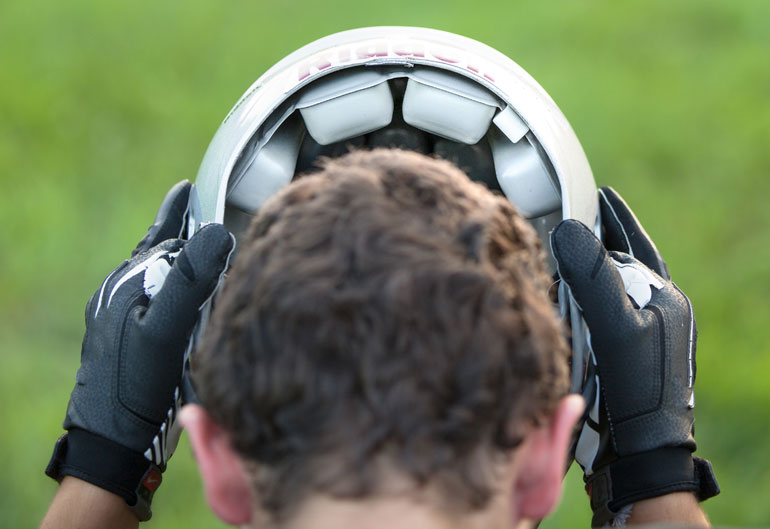Evidence is mounting about how damaging a concussion in contact sports can be. Now a smart tool is aiding in detection and diagnosis.
A close-up of the Jolt sensor.During a practice for his junior year wrestling team, Massachusetts Institute of Technology mechanical engineering student Ben Harvatine suffered a concussion that went unnoticed.
“I was feeling dizzy and nauseous, but I thought I was dehydrated, so I pushed through,” he said.
“But by the end of practice, I was having trouble getting up, and I couldn’t pull words together.”
Harvatine ended up in the hospital with a long recovery that required dropping out of all classes for the autumn semester.
Upon returning to MIT the following spring, he enrolled in a measurement and instrumentation course, where he was charged with using a sensor to collect real-world data. And he had a revelation.
“I grabbed a bunch of accelerometers, strapped them to my wrestling headgear, and, much to my parents’ chagrin, went back to the wrestling mat to get knocked around and start gathering data,” he said.
Last October, Harvatine started selling a wearable sensor for athletes, called the Jolt Sensor, that detects and gathers data on head impacts in real-time. Commercialised through Harvatine’s startup Jolt Athletics, the sensor is now being used across the US by teams from grade-school to college levels, and is being trialed by professional teams.
The Jolt Sensor is essentially a small, clip-on accelerometer that can be mounted on an athlete’s helmet, or other headgear, to measure any impact an athlete sustains. When the athlete receives a heavy blow, the sensor vibrates and sends alerts to a mobile app, which is monitored by coaches or parents on the sideline.
The app lists each player on a team wearing the sensor. Filtered to the top of the list are players that received the biggest hits, players with the most total hits, and players with above average hits compared to their past impacts. If a player sustains a hard hit, the player’s name turns red, and an alert appears telling the coach to evaluate that player. The app includes a concussion symptom checklist and cognitive assessment test.
A key innovation of the Jolt Sensor is a custom communications protocol that allows an unlimited number of sensors to transfer data to the app from up to 183 m away.
“That gives us an unparalleled range,” Harvatine said.



